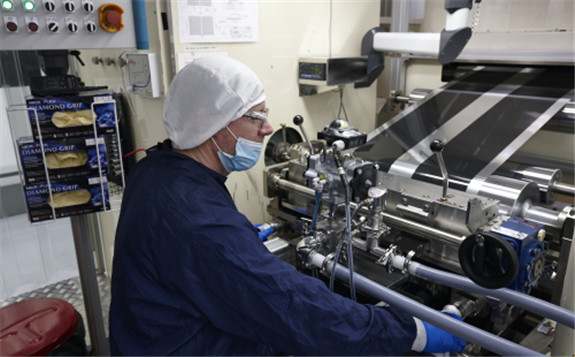XALT Energy, LLC and the ReCell Center, the US Department of Energy’s Vehicle Technologies Office’s (DOE/VTO) battery recycling center (earlier post), are working to close a technology gap between the world’s increasing use of lithium-ion batteries and the need for advanced, in-process and end-of-life battery recycling options. XALT Energy, a Freudenberg Sealing Technologies company, is a Midland, Mich.-based developer and manufacturer of lithium-ion technology solutions.

Working with the ReCell Center, XALT is providing material resources and proof-of-concept testing to validate a simple separation process that allows for direct recycling of manufacturing scrap electrode materials into new battery electrodes.
If successful, the process could create a significant cost benefit for battery manufacturers by reducing the amount of virgin raw material used in production. In addition, with supply chains for critical materials such as nickel-manganese-cobalt oxide (NMC) still being established, advanced recycling could significantly reduce the volume of materials being globally shipped, reducing transportation emissions and energy costs.
XALT experts at the company’s Auburn Hills Technology Park have been testing recycled NMC electrodes produced by the ReCell Center’s process and “the results look promising,” says John Camardese, Director of Cell Development at XALT. “This technology would enable us to directly recycle our coated scrap to recover expensive NMC for use in slurry. This will be a real game changer."
Global demand for lithium-ion batteries is expected to rise from 230 GWh in 2020 to 1,700 GWh in 2030, according to industry analysts at IHS Markit, with new battery-electric vehicles driving much of this demand. At this growth rate, IHS Markit analysts note, recycling will need to increase significantly to keep up with such material demands.
ReCell Center scientists based at the DOE’s Argonne and Oak Ridge National Laboratories proposed a fundamental research program to develop a recycling process that, unlike existing hydro- and pyro-metallurgical methods, would separate and rejuvenate cycle-damaged, nickel-manganese-cobalt foil coatings for reuse in new batteries. Without a robust source for end-of-life batteries to conduct their research, they contacted XALT about collaborating on the project.
The separation recycling process that has emerged out of collaboration with XALT will offer the company several advantages when proof-of-testing validation is complete, Camardese says. This process is much less energy intensive and more sustainable than hydro- and pyro-metallurgical recycling, which uses chemicals and heat to break down and separate the material back to feedstock compounds such as metal sulfates.
Several energy intensive steps are required to convert metal sulfates back into usable battery materials such as copper foil or NMC. The ReCell Center’s focus on more direct methods to separate and rejuvenate batteries will have clear cost and environmental benefits.
Multiple analyst reports indicate that 180 kilotons (kt) of lithium, 450 kt of nickel, and 930 kt of cobalt will be needed from recycled sources to meet global lithium-ion battery requirements in 2030.
The ReCell Center, funded by the Department of Energy’s Vehicle Technologies Office, was initiated in 2019 to develop technologies and concepts that will improve the economics of battery recycling, to help reduce the cost of new batteries and to bolster the domestic US battery supply chain. The ReCell Center is led by Argonne National Laboratory and includes the National Renewable Energy Laboratory, and Oak Ridge National Laboratory.